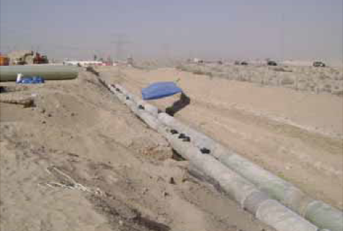
Jumeirah Village South
Jumeirah Village South is a mixed-use development located between Al Khail and Emirates Roads in Dubai.
- INFRASTRUCTURE


Jumeirah Village South
Dubai, UAE
Jumeirah Village South is a mixed-use development located between Al Khail and Emirates Roads in Dubai. The property is divided into two sections namely the Circle and the Triangle and subdivided further into a total of 18 districts. The Master Developer, Nakheel, developed this land for commercial and residential use and the air-conditioning needs of the whole development were desired to be met through a District Cooling network. The District Cooling network was to serve a variety of land parcels such as schools, residential buildings, community halls, commercial and business centres, shopping malls to name a few. The total connected cooling load demand of the development approximated to 320,000 TR and chilled water generated by 6 District Cooling Plants located strategically around the development with their final built-up capacities as detailed below.
| District Cooling Plant | Plant Capacity in TR |
|---|---|
| DCP C1 | 40,000 TR |
| DCP C2 | 60,000 TR |
| DCP C4 | 60,000 TR |
| DCP C5 | 70,000 TR |
| DCP T1 | 60,000 TR |
| DCP T2 | 30,000 TR |
The district cooling distribution network is approximately 80km in length.
Additionally, TJEG/RMJM furnished the complete design for two 20,000 TR district cooling plants and associated distribution network for Jumeirah Village North.
Temporary Chiller Plant
In view of the numerous developments at JVS there was a need to serve chilled water to prospective tenants of some of the land parcels before the target commissioning dates for the permanent district cooling plants. As the main distribution network pipe laying was complete, it was decided to use it for circulating chilled water from three 2,000 TR temporary chiller plants to meet immediate requirements for an interim period.
The temporary chillers that were modular in construction were self-contained units with the evaporator and condenser shells mounted on a skid foundation along with the chiller and condenser pumps. The skid was also provided with the necessary electrical panels and circuitry.
Cooling towers were located at the roof deck of the skid. The overall plant assembly was containerized and capable of being mobilised to any location within a short period of time.
Planning of the temporary chiller plants was accomplished with the consideration to minimize wastage to an extent that even the foundation bases for the chillers could be transported should there be a need for re-use elsewhere.
Water requirements to run the plant was fulfilled by polishing treated effluent sewerage (TSE) to potable water quality by means of mobile water treatment plants.
Additionally, TJEG/RMJM furnished the complete design for two 20,000 TR district cooling plants and associated distribution network for Jumeirah Village North.
Temporary Chiller Plant
In view of the numerous developments at JVS there was a need to serve chilled water to prospective tenants of some of the land parcels before the target commissioning dates for the permanent district cooling plants. As the main distribution network pipe laying was complete, it was decided to use it for circulating chilled water from three 2,000 TR temporary chiller plants to meet immediate requirements for an interim period.
The temporary chillers that were modular in construction were self-contained units with the evaporator and condenser shells mounted on a skid foundation along with the chiller and condenser pumps. The skid was also provided with the necessary electrical panels and circuitry.
Cooling towers were located at the roof deck of the skid. The overall plant assembly was containerized and capable of being mobilised to any location within a short period of time.
Planning of the temporary chiller plants was accomplished with the consideration to minimize wastage to an extent that even the foundation bases for the chillers could be transported should there be a need for re-use elsewhere.
Water requirements to run the plant was fulfilled by polishing treated effluent sewerage (TSE) to potable water quality by means of mobile water treatment plants.
